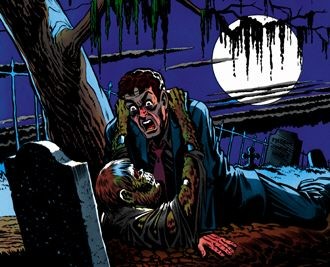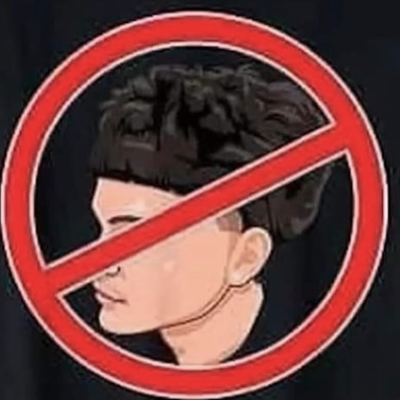| Listen up, boys and ghouls: Tales from the Crypt gets the four-color treatment with the new EC Archives editions. |
Still, the new EC Archives is a pretty exciting development. For decades, the highest-quality editions of Tales from the Crypt, Two-Fisted Tales, and their ilk were big hardbound compilations that (for economic reasons, one assumes) were printed in black-and-white. This new series, to the delight of connoisseurs of garishness, features new coloring that restores the bloody reds and explosive yellows but makes them more vivid than old newsprint ever could. Each volume presents six complete issues of its respective series (the first Shock SuspenStories and Weird Science volumes are out now, Crypt and T-FT will follow soon) with covers and original ads intact. If the O. Henry-like twists and sci-fi shocks offered here don’t wow you, introductions by folks like Steven Spielberg and George Lucas will point out what you’re missing.
This fall has been a good one for comic-reading lovers of the sleazier side of American pop culture. Kim Deitch’s new Shadowland spins 10 tales set in circus sideshows and carny-friendly barrooms; his anachronistic drawing style suits plaid-clad clowns, high-diving pigs, and wannabe starlets to a T.
Similarly addicted to the cheap hucksterism of commerce is Deitch’s ’60s underground-comix peer Bill Griffith, whose latest Zippy collection, Connect the Polka Dots, finds surreal pleasure in a popsydelic array of retro diners and two-story mascot sculptures like Big Boy. Helpfully, the volume includes a “Pindex” that decodes references from Coney Island to the Santa Cruz boardwalk.
Griffith is an ironic observer and Deitch an amused storyteller, but — in my imagination, at least — illustrator Drew Friedman has become spiritually intertwined with the forgotten entertainers and cheap thrills he celebrates. It has been far too long (almost a decade) since Friedman has published a book — commercial illustration keeps him busy — but he returns this month with Old Jewish Comedians, a self-explanatory trip through the Borscht Belt world of Shelly Berman and Milton Berle. The portraits here aren’t as bizarrely smutty as the stuff Friedman did back in his Screw days, but it ain’t the Bob Hope Holiday Special, either.
If Comedians glimpses (in the words of one of Friedman’s previous books), the private lives of public people, The Rejection Collection takes us behind the scenes in a different way. Edited by New Yorker contributing cartoonist Matthew Diffee, the book gathers work done by NY regulars that was considered unsuitable for publication. (This book isn’t published or officially sanctioned by the magazine, though its cartoon editor supplies a foreword.) Unsurprisingly, the humor on display here tends toward the raunchy, grisly, or misanthropic fringes of what makes it into the classy rag’s pages — from suicide and STDs to a priest’s scrawled sign, “If the confessional’s a-rockin’, don’t come a-knockin’.” The hit-to-miss ratio seems about as good as that of what actually gets accepted for an average issue, but this little tome offers a bit of added value as well: actual photographs of the artists behind all those distinctive styles, along with clever questionnaires. Am I the only one surprised by how many of these folks are good-looking?
Finally, a slight tangent. Diving into the world of burlesque and disreputable comics puts me in mind of a genre where the connection between words and pictures is less direct but no less crucial to salesmanship: the pulp novel. In the ’80s, novelist Barry Gifford resurrected pulp with the marvelous Black Lizard imprint; this year, the job is being done by writers Charles Ardai (more famous, perhaps, as founder of the internet company Juno) and Max Phillips at an outfit called Hard Case Crime. Hard Case, published by a larger company with lines of romance novels, Westerns, and horror titles, echoes Black Lizard both in its look — they commission original retro-styled cover paintings and use vintage typefaces — and content — by reprinting titles by roman noir stars like David Goodis and Cornell Woolrich. (They’re also committed to new work by contemporary authors.) Looking at the lingerie-and-fur-clad blonde clutching handfuls of cash on the cover of Richard Prather’s The Peddler, it isn’t hard to put yourself in the shoes of a Two-Fisted Tales reader who, having misspent his youth on four-color gore, is ready to graduate to tales racy enough that not even EC Comics will depict them in pictures...

















